Bar Height Patio Table
by mwawoodworks in Workshop > Woodworking
5542 Views, 92 Favorites, 0 Comments
Bar Height Patio Table

Want to amp up your outdoor living space this year? Need more space for serving up delicious summer treats? Learn how to build this bar height outdoor table! Summer time means spending time outdoors with friends and family and making your outdoor space work for you is key. This outdoor bar table is a great piece for your deck or patio when hosting outdoor events or just enjoying time with your family to the fullest. This bar height outdoor table is 42 inches high, 23" deep and 60 inches long. It features a storage cabinet underneath for convenience and plenty of seating space and its made from red cedar so its beautiful as well as rot resistant so its perfect for outdoor use.
Some things to note:
I used two-part epoxy for assembling this build. You could also use water resistant wood glue and it would be perfectly fine. The reason I went with epoxy over wood glue is because the epoxy has a longer open time to work with and it also doesn't contain water so it wont make the wood fibers swell when inserting tenons into mortises the way wood glue can do. Both of these factors make epoxy a good glue for large multi-step assemblies like this one. You'll be happy you did it once everything is together! Also, epoxy is great for outdoor use as it is very water resistant (woodworkers sometimes use epoxy as a finish for outdoor projects).
The next thing to note is that I am using floating tenons (dominos) to construct the base of the table. You can easily substitute dowels for dominos and not change the build plans at all. Just use two half inch diameter dowels for every #10 domino used.
Where to Follow along with my work:
My Website (full tutorials, plans, videos): https://mwawoodworks.com
My YouTube (all my build videos): https://youtube.com/c/mwawoodworks
My Instagram (behind the scenes stuff): https://instagram.com/mwawoodworks
My Pinterest (things I find inspirational) : https://pinterest.com/mwawoodworks
Supplies
Cutting and Milling Parts

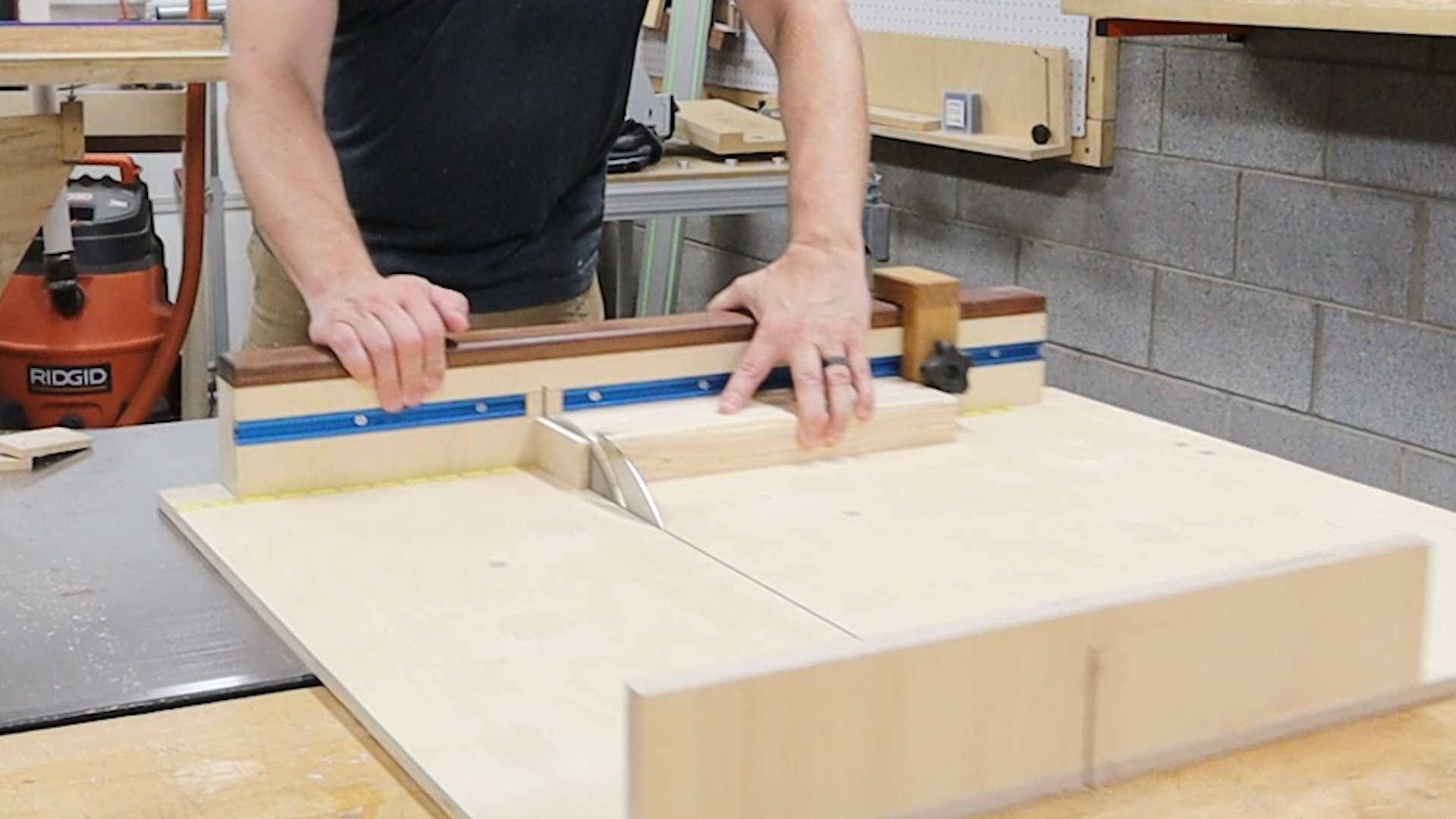
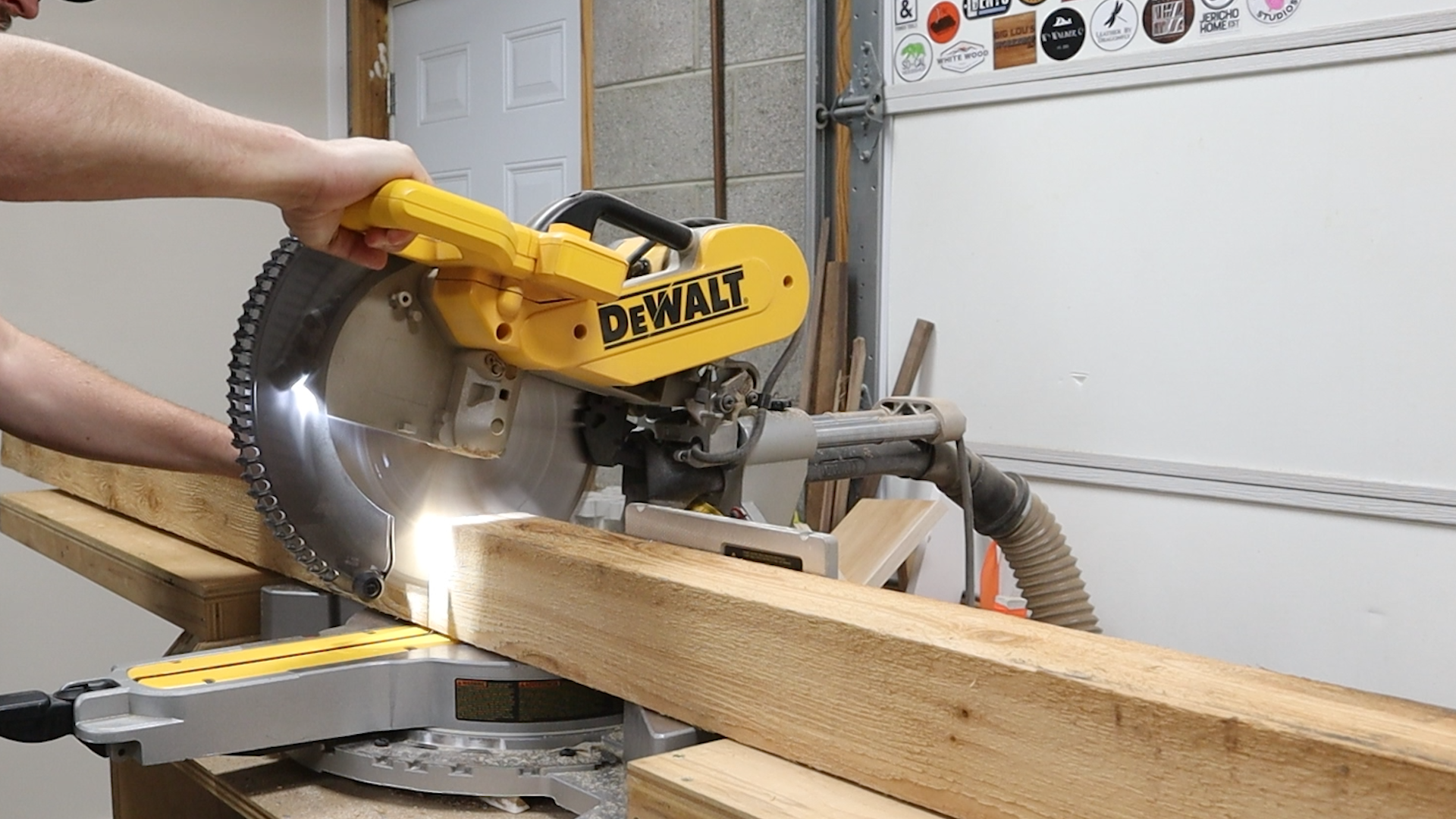



For this project I’m using western red cedar and I begin by cutting all my parts to rough length at the miter saw. Red cedar is a great for making outdoor furniture because it’s very stable and rot resistant.
I bought rough sawn cedar for this project and the 4x4 posts were true 4”x4”. So I wanted to plane those down to 3 ¼ to look less chunky and a few trips through the planer made quick work of it.
I need to cut the rounded corners off all my 2x4 parts which the table saw makes quick work of.
I then need to cut all my small parts to final length using my cross cut sled. I cut the longer parts to length by ganging them together at the miter saw to ensure they were all the same length. I then adjusted the stop to make the cuts for the legs lickety quick.
And I needed to cut all my ¾” material to rough length. These will be used to make the panels for the sides, back, the door and the shelves.
A quick trip through the planer to clean up all the 2x4 parts and they are good to go.
Making Panels for the Sides and Door






First, I needed to rip the ¾” material to width at the table saw. I used the planer to bring these down to 5/8” thick which will work for my side panels and the shelves. The parts for the shelves are then glued up carefully. Since they will no longer fit in my planer I don’t want a sloppy glue-up to fix manually.
I’m making the side panels and door using frame and panel construction and the first step is to cut all the grooves to accept the panels. I installed my dado stack in the table saw for this task cutting the grooves right down the center of my frame parts. Next, I then cut all the tongues using my tenon jig that rides on my saw fence. I still have my dado stack set up so I can cut these in a couple passes. If you’re interested in making a fence like mine, I’ll put links in the description to the video and plans to build both the fence and tenon jig. The last step here is to cut rabbets along all four sides of the panels to fit into the grooves.
Now for this assembly I’m going with epoxy over wood glue. It has a longer open time and it won’t swell the wood fibers because it doesn’t contain water. These things help a large assembly go smoother. Assembling the side and back panels is really easy. A little epoxy in the ends of each groove and on the tongues is all you need. Epoxy is slippery stuff and helps these joints go together surprisingly easy compared to wood glue. I really like frame and panel construction because of how simple it is. You don’t need to fool with fasteners and if you cut everything properly the assembly pretty much squares itself up. Two clamps is all you need to hold it together while it dries. And everything went together square on the first try. That’s due to the joinery, not me. Once the panels are out of the clamps I give them a quick sanding just to remove the glue squeeze out and flush up all the joint lines. I’ll do a final sanding later.
Joinery for the Table Base





The rest of the assembly will be done with dominos. If you can’t use dominos, half inch dowels would work too, just make sure to double them up. All of the apron and stretcher parts receive a mortise in each end.
For the side panels, I lay out my mortise locations along each side. I then put four mortises down each side of the panels. I repeat that same process for the back panel. Laying out my mortise locations and adding four mortises per side. Placing the mortises on the legs was a little tricky but I made this spacer from a 2x4 to raise the domino the correct height to make the cuts.
This also gave me a good stable surface to work from. I could easily work my way up and down each side of the leg placing my mortises in the right spots quickly.
One final step before we glue is to round off the corners of the legs. These are especially prone to dents and dings and rounded edges help prevent unwanted damage. A roundover bit in the router table makes quick work of this.
The Glue-up - Sides

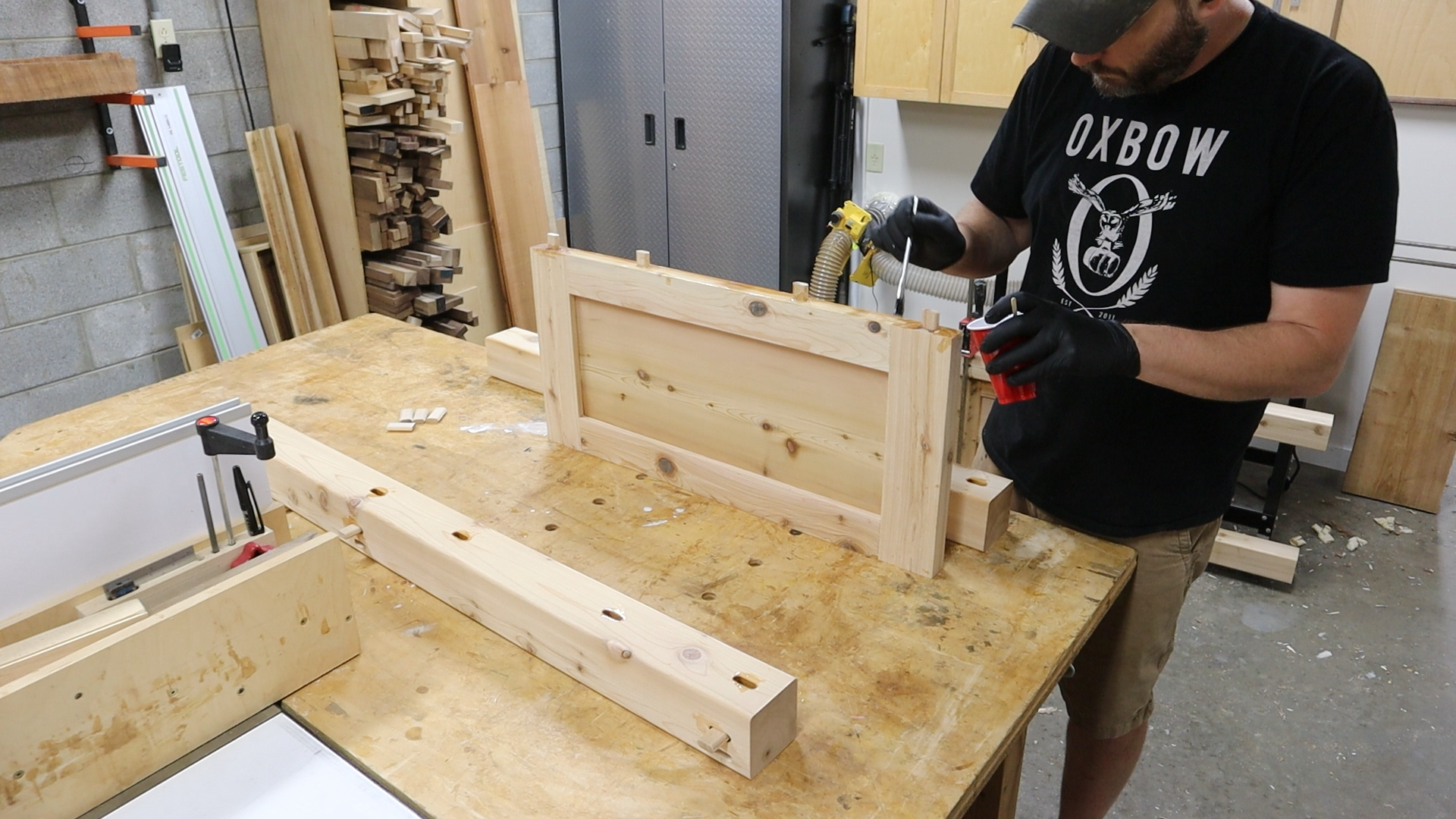




OK, now we glue. The first stage is to glue the side panels to the legs creating a side assembly. Each mortise gets a liberal coating of epoxy and this can take a few minutes as we have a lot of mortises here. This is where epoxy’s long open time is important. With wood glue you risk the glue beginning to set up and swelling the mortises making it harder to get the dominos in there. But with epoxy everything slides together real well and once the side assembly is together a couple clamps will hold it while it cures. A third clamp in the middle makes sure everything is tight.
I also glued up the far side of the table with an apron and stretcher in between. This one goes quicker because there’s fewer joints.
The Glue-up - Making the Cabinet



Once the sides are dried and out of the clamps I can add the back panel and the front apron and stretcher. Then I add the second side, just dropping it onto the dominos. This is where the light weight of cedar is nice. These assemblies don’t weight that much and are easy to handle. I then clamp everything up and let that sit to cure.
The Glue-up - Completing the Base



The last thing to do is attach the remaining side to the stretchers. And this is held together with pipe clamps at each joint. Make sure to raise everything off the workbench. You don’t want to epoxy your table to it. That would be a bad surprise. I then go ahead and give everything a final sanding making sure to clean any squeeze out. This went quick because of all the sanding I had already done before assembly.
Making and Installing the Shelves




I cut my shelves to final dimension at the table saw. In order to add notches to fit around the legs, I used the band saw. This was especially easy when using a mag switch as a positive stop. I made every cut perfect and repeatable. I just cut to my mark, add the magswitch and the rest of the cuts go super fast.
Installing the Shelf Supports
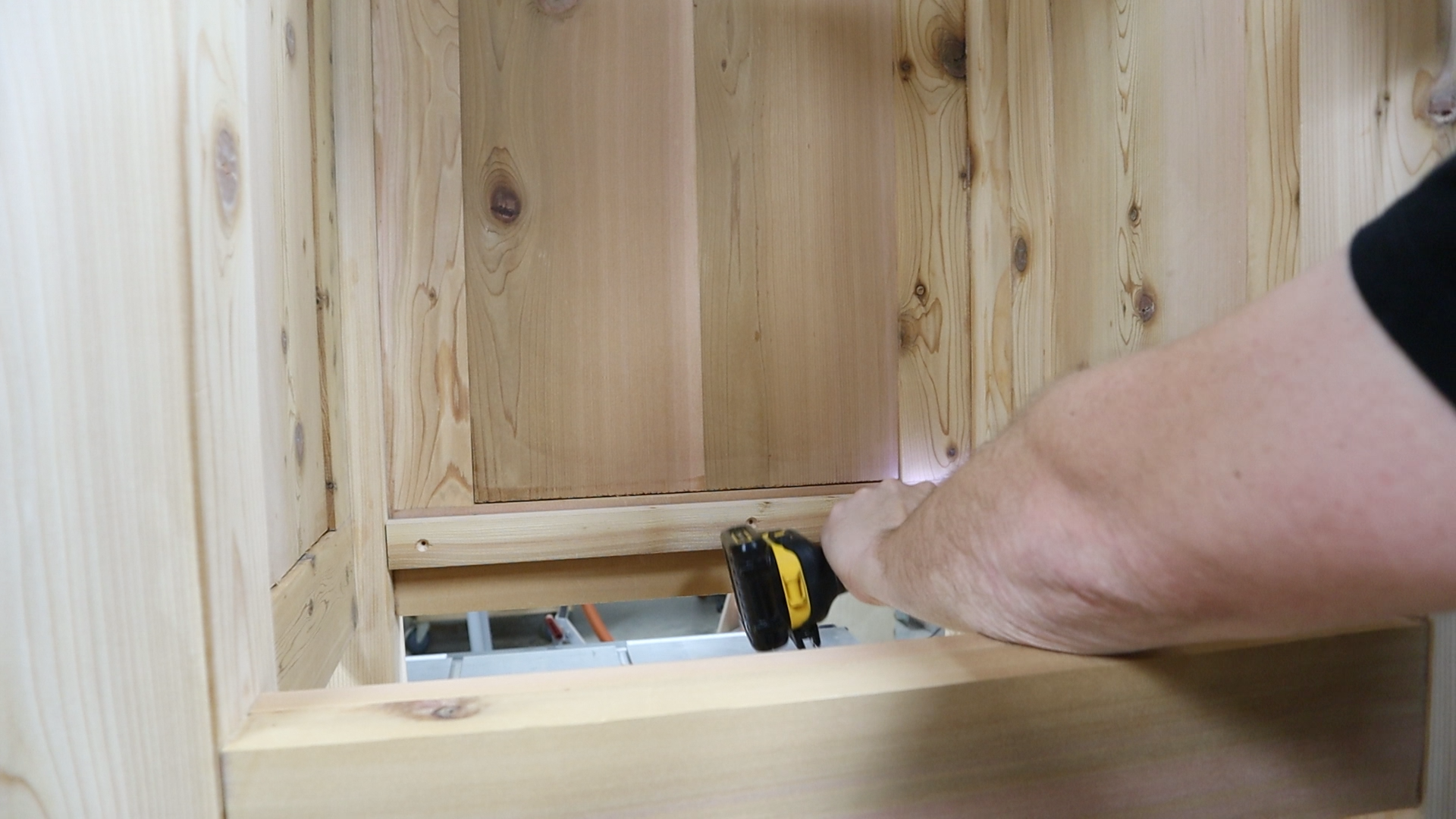




I used CA glue to temporarily hold the runners in place before I attach them with screws. This isn’t a strong joint on its own, I’m just doing it for convenient hands free installation. Each shelf support gets screwed into the frames of the side and back panels. And with a little persuasion the shelf pops right in. I’ll fasten these in with screws like the runners. That way if I want to adjust the height later I can easily make the change.
I then repeat that process for the upper shelf. Screwing in the runners on the sides and back and adding the shelf.
Installing the Door



I then add hardware to the door. I’m using euro hinges to keep everything hidden behind the door for a nice clean look. By the way this door is frame and panel construction just like the side panels.
Making the Table Top





OK the final thing to do is make the table top. I’m using two 1.5” thick cedar boards to make the top. Because these are 12” boards I only have one glue joint. So I line everything up carefully and add lots of clamps use biscuits or dominoes here if desired to make sure everything is aligned. After sanding the top from 80 grit to 180 grit I chamfer the underside at the router table. Again, the light weight of cedar makes this a pretty easy task.
I then filled the voids and knots on the top, this time with black tinted epoxy because, why not? Even though its tinted black it still sands without staining the wood surrounding the knot!
Next I trimmed one end flush with my track saw. I flipped the top around and make the same cut on the opposite side. Also, I used a hand plane to chamfer the ends to match the sides but I forgot to film it! Running the ends across the router table would have been too difficult.
Attaching the Top to the Base


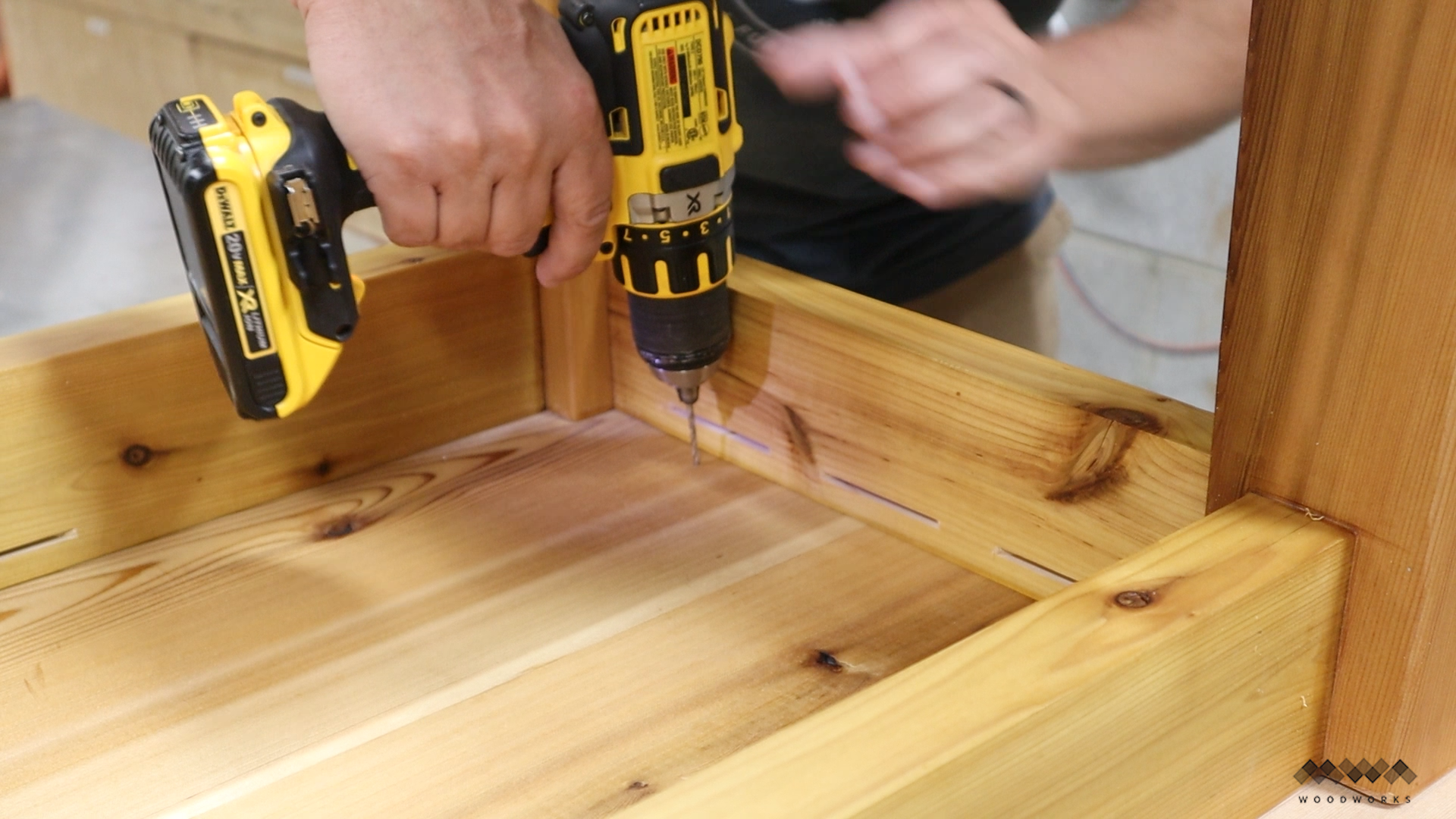


After applying finish I need to attach the top to the base and to do that I’m using Z-clips. Z-clips are easy to install and allow the table top to expand and contract. After cutting the slots in the aprons with a biscuit joiner I set the base upside down onto the table top making sure to center the base on all four sides.
I then used one of the z-clips to locate where the screw holes need to be and marked the location with a center punch. Next I pre-drilled the holes and fastened the z-clips in place. I repeated this process all along the apron, until the based was secured to the top. I repeated this process inside the cabinet as well but it was too dark and cramped in there for me to show you on camera.




Now since this table will be sitting outside and exposed to water, I wanted to keep the bottom of the legs from constantly contacting the ground.
To solve for that I’m installing leveling feet into the legs. First, I use a forstner bit to create an opening wide enough to fit the feet. I then used a smaller forstner bit to drill a pilot hole for the threaded insert. And after cleaning the debris from the hole I screwed the threaded insert into place.
You can use epoxy to secure these if you want but I felt like they were secure enough so I left them alone. I then just screwed in the leveling feet until they bottomed out on the insert which left them about 3/8 of an inch proud of the surface. This would guarantee that the bottom of the legs would be fine even if water pooled up around them.
THANK YOU!!

Well guys that is it! I love how this bar height outdoor table turned out and my family is going to get tons of good use out of this thing as we spend more time outside on the patio as a family.
I hope you found these instructions helpful! If you'd like to see more detail, check out this video where I walk step by step through the build!
If you enjoyed this tutorial and found it helpful, you can see more of my work in the following places:
My Website (full tutorials, plans, videos): https://mwawoodworks.com
My YouTube (all my build videos): https://youtube.com/c/mwawoodworks
My Instagram (behind the scenes stuff): https://instagram.com/mwawoodworks
My Pinterest (things I find inspirational) : https://pinterest.com/mwawoodworks